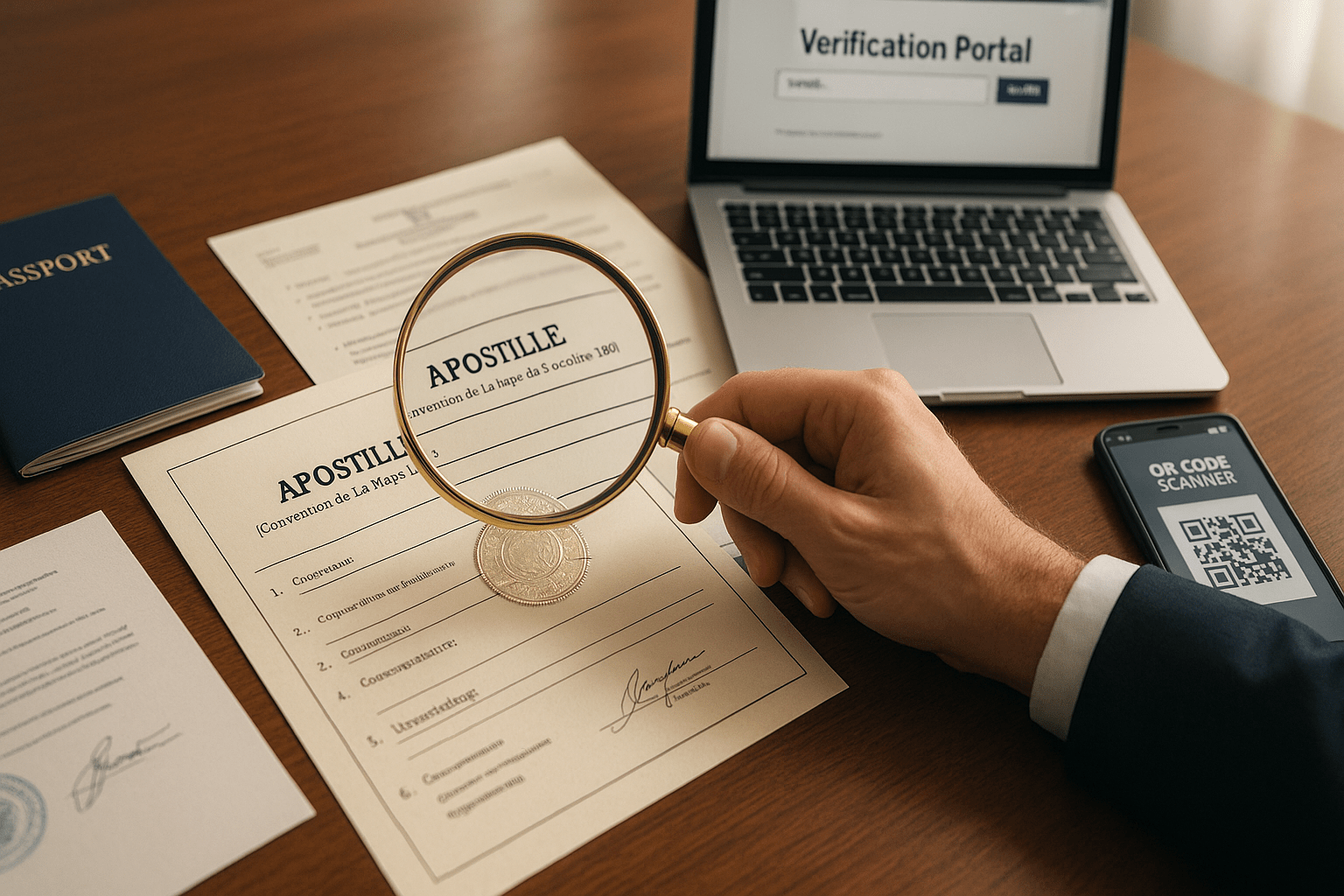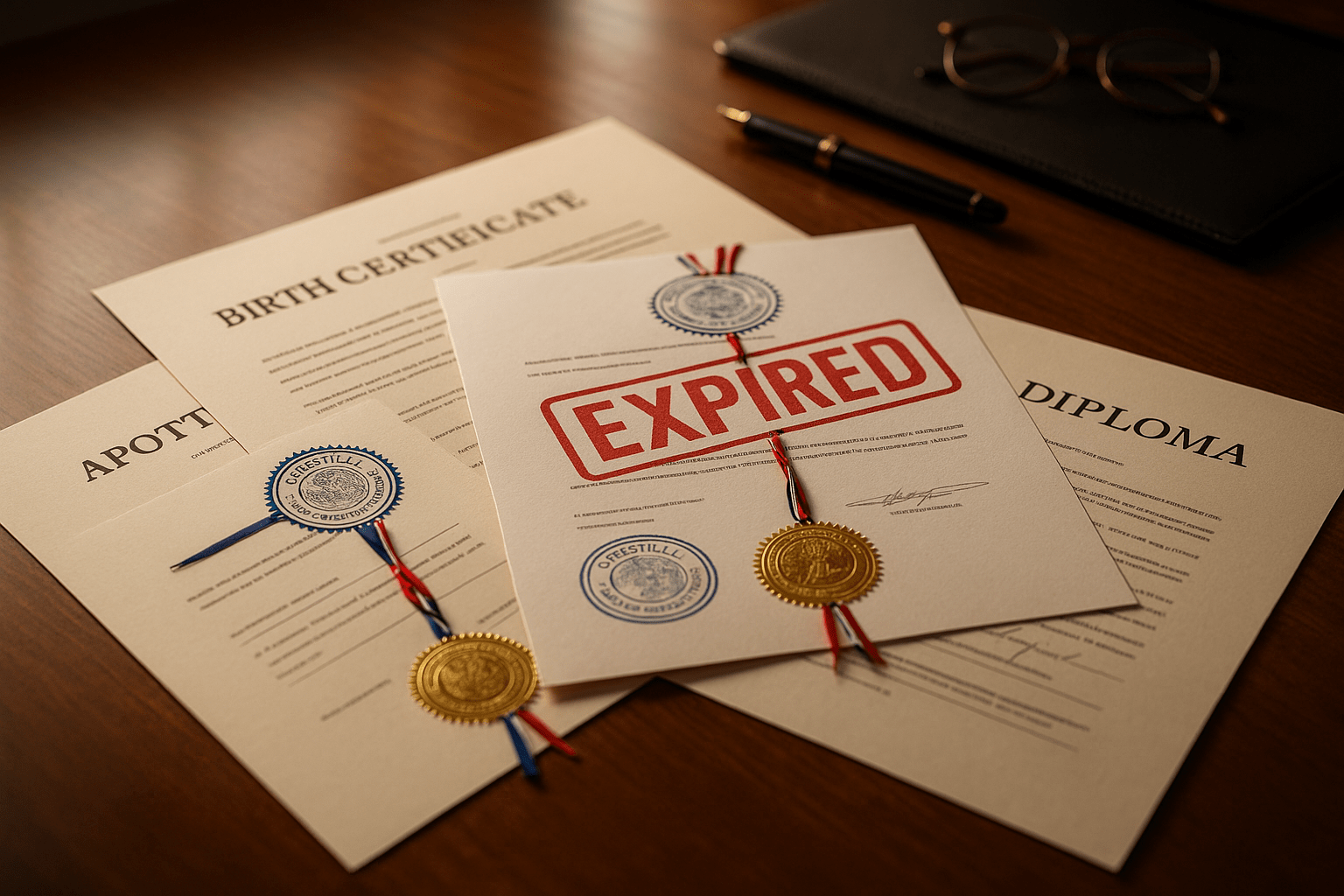
Enrollment Verification Letter Apostille
Your enrollment certification is essential when securing admission to a prestigious university in Spain or a teaching program in Japan. But before the certification can be recognized abroad, it must receive authenticity validation. This post will clarify how an apostille for an enrollment verification letter transforms your school letter into an international credential and provide you with a few insider tips to get your document ready for the next big trip.
Why You Might Need an Enrollment Verification Letter for International Use
The enrollment verification letter in your hands doesn’t just prove your academic status at home, but also plays a pivotal role on the global stage. Whether transferring to an overseas school or applying for a visa, this campus document becomes a powerful tool to unlock your international ambitions.
Use-Сases for Issuing Abroad
Foreign institutions typically require you to provide verified proof of school enrollment during:
- Student or exchange visa applications.
- Admission to foreign universities or study abroad programs.
- Overseas internships or jobs that need verification of your student status.
- Compliance with immigration or residency regulations.
These scenarios require official documentation, signed and sealed by your U.S.-based institution, to confirm your enrollment.
Typical Documents Involved
It’s also important to differentiate between the following academic documents that you may be asked to submit:
- Enrollment verification letter: An official statement confirming the student’s status (full-time/part-time), program details (major/focus area), and dates of attendance.
- Transcript: A record of academic performance, such as courses and GPA.
- Diploma: Proof of program completion or graduation.
Each of them serves a distinct role in drawing a comprehensive picture of your educational standing. Additionally, to demonstrate that you’re currently a student to foreign authorities, a university enrollment letter with an apostille is often the only relevant document.
Key Differences When the Document Is for Domestic VS. Foreign Use
When you submit this document to a domestic institution, it’s usually accepted as-is. However, that same letter isn’t sufficient for foreign use. It requires an extra layer of verification, such as apostille certification for Hague Convention countries, ensuring it will be valid and recognized by the destination officials.
Steps to Prepare Your Enrollment Verification Letter
Before obtaining an apostille for your enrollment certificate, you need to prepare the document properly first. This foundational phase often involves getting the right version of the letter, verifying it meets the exact international formatting, and securing notarization or certification if necessary.
Requesting the Letter From Your Institution
You can begin by contacting your school’s registrar for an official letter. Many institutions allow you to request it in person or through an online portal. It’s best to specifically indicate that you need the letter for international use, as it will be tailored appropriately for authentication processing — raised seals or wet-ink signatures, for instance.
Ensuring the Letter Meets Foreign-Use Requirements
Once you get the verification statement, check for the following elements for seamless recognition abroad:
- Official letterhead: It must be printed on the school’s stationery.
- Authorized signature: The letter is signed by the registrar or a designated university official.
- Date of issue: A recent date is required to prove your current status.
Always double-check these details because missing any of them could delay your apostille process.
Notarization or Certified Copy Requirements
Certain states require that the enrollment letter be either notarized or certified to be eligible for an apostille. Consult your Secretary of State’s office or professional service provider to know what you need to do. Your school may have a notary on staff to assist with notarization, making it more convenient.
Tips for a Smooth Enrollment Verification Apostille Process
The right roadmap helps you get an apostille for your enrollment verification letter smoothly, rather than getting lost in a bureaucratic maze or facing dead ends. A few smart moves from our seasoned specialists can save you time and resources. Follow these tips to achieve a seamless experience:
Double-Check Institutional Requirements
Each institution has its own policies for enrollment certification, so it’s recommended to confirm their specifications in advance. Do they need a particular format, or are there any phrases that must appear in the letter? Clearing confusion early allows you to prepare a flawless copy right from the start.
Verify the Signatory Authority
The most common reason for apostille rejection at the state office is an issue with the signature. The person signing your letter must be an authorized school official, such as a registrar. If notarization is required, the notary must be commissioned and in good standing in the state where you apply for an apostille.
Keep Original and Digital Copies
You should store the original in a safe place and scan high-quality digital copies of the letter for your records. This serves as a backup in case the paper version gets lost during transit. You may also need one for certified translation or when you have to resend documents to the institution abroad.
Avoid Common Pitfalls
To head in the correct direction, remember to steer clear of these frequent mistakes:
- Using an old letter or one without a date.
- Forgetting the notarization requirement.
- Submitting another academic document that doesn’t verify your status.
Cross out these errors before sending the paperwork for authentication to save you weeks of corrective work.
Handle Translation and Legalization Properly
If the receiving institution asks for a translation into the local language, this must be done before you request an apostille. Non-member nations of the Hague Convention only recognize legalized documents, so you’ll need to go through further verification at the DOS and embassy after state-level authentication.
Plan Ahead for Deadlines
Apostille processing times at the state office vary significantly, ranging from a few days to multiple weeks, depending on your state and workload. That’s why start early to prevent a last-minute rush, and factor in translation, mailing time, and any unexpected requests for additional information.
Consider Professional Apostille Services
If you have a short international deadline or are new to the authentication process, hiring an expert apostille service can be a rewarding move. They’ll handle every detail, from dissecting state-specific requirements to managing the logistics — helping you accelerate the timeline while upholding the highest level of international compliance.
After You Have the Apostilled Document
Congratulations on getting your apostille successfully! Now that the hard part is over, it’s time to make the most of your newly authenticated document overseas. Here’s what happens next, and how to navigate this equally critical phase:
How to Submit the Document Abroad
Depending on the purpose, your apostilled enrollment certificate is submitted directly to the requesting authority. Common situations involve:
- Employers: For job applications, internships, or work permits.
- Universities: Registering for study abroad programs, transferring credits, or applying for admission to foreign schools.
- Embassies: For visa applications, residency permits, or other immigration procedures.
You should follow their specific submission guidelines. Some entities accept scanned copies uploaded to their online portals, while others request the original, physical paper sent via mail or hand-delivered.
How Long the Certification Remains Valid, and Scenarios Where Re-Issuance May Be Needed
An apostille stays valid forever, as long as the underlying document is in effect. This means it technically doesn’t have an expiration date. However, most foreign institutions consider an enrollment verification letter relevant for three months after the issue date, as it reflects your status at a specific time. Hence, if your letter becomes outdated, the attached apostille will also be deemed ineffective. It’s advised to request a new one and repeat the apostille process then.
Dual-Use Cases: Using the Same Document for Multiple Countries or Purposes
Using the same letter for several countries or purposes is feasible. For example, you may use it for a scholarship application and a student visa interview for the same country. Conversely, you can’t reuse it for countries where one requires a certified translation and the other needs additional certification. It’s necessary to tailor the authenticated letter according to each destination’s authority.
Cost, Timing, and Service Options
Understanding the time and monetary investment for an apostille for college enrollment verification is crucial to building a practical plan and budget. Expect the following variables when managing your total cost and timeline.
Breakdown of Typical Costs
The cost factors you’re most likely to encounter include:
- Institution fees: Most registrars charge an average of $10 for an enrollment letter.
- State authentication fees: Usually range from $5 to $20 per document.
- Foreign embassy fees: Depends on the destination country.
You should also consider the expedited apostille service charge, as well as the courier fees, to come up with the final estimate.
Timeline Overview
The entire process follows this sequence, which often demands your patience:
- Request the enrollment letter from your school (up to 5 business days)
- Notarize the document if needed (within the same day)
- Submit it for an apostille through your state office (5 to 15 business days)
- Deliver the apostille back to you (2 to 5 business days for mail)
Therefore, you might expect at least 2 weeks in total, and plan for the longest possible timeframe to avoid paperwork stress.
Your Global Document: Certification Secured
Getting an apostille for your enrollment certification is the fastest way to earn international recognition. From requesting the accurate document to securing authentication at the state office, each step plays a crucial role in making your paperwork accepted abroad. If you’re not ready to face this challenge head-on, contact our team for a personalized consultation today!
FAQ
Continue reading for answers to some of the most common concerns about university enrollment letter apostilles.
Can I Use a Photocopy of the Letter for Apostille Purposes?
No, the authority typically requires an original enrollment verification letter with an official signature and notarization for apostille processing.
Does the Apostille Process Differ if I Studied at an International Branch Campus?
Yes, you may have to contact your registrar to inquire about the apostille process, since an apostille must be issued by the country where the institution’s main body is located.
What Happens if the Issuing Institution Changes Its Letter Template After I Obtain the Letter?
Your existing letter remains effective as long as it stays current and meets all the requirements of the receiving authority.
Can I Use the Same Apostilled Letter in More Than One Foreign Country?
An apostille typically discloses the country of the document’s intended use, so the destination country might reject it if the verification letter is meant for use in a different jurisdiction.
What Should I Do if the Destination Country Rejects the Apostilled Document?
You can contact the receiving authority for the rejection reason. Then, request a reissued verification letter or a re-aposstille, depending on the specific problem.





